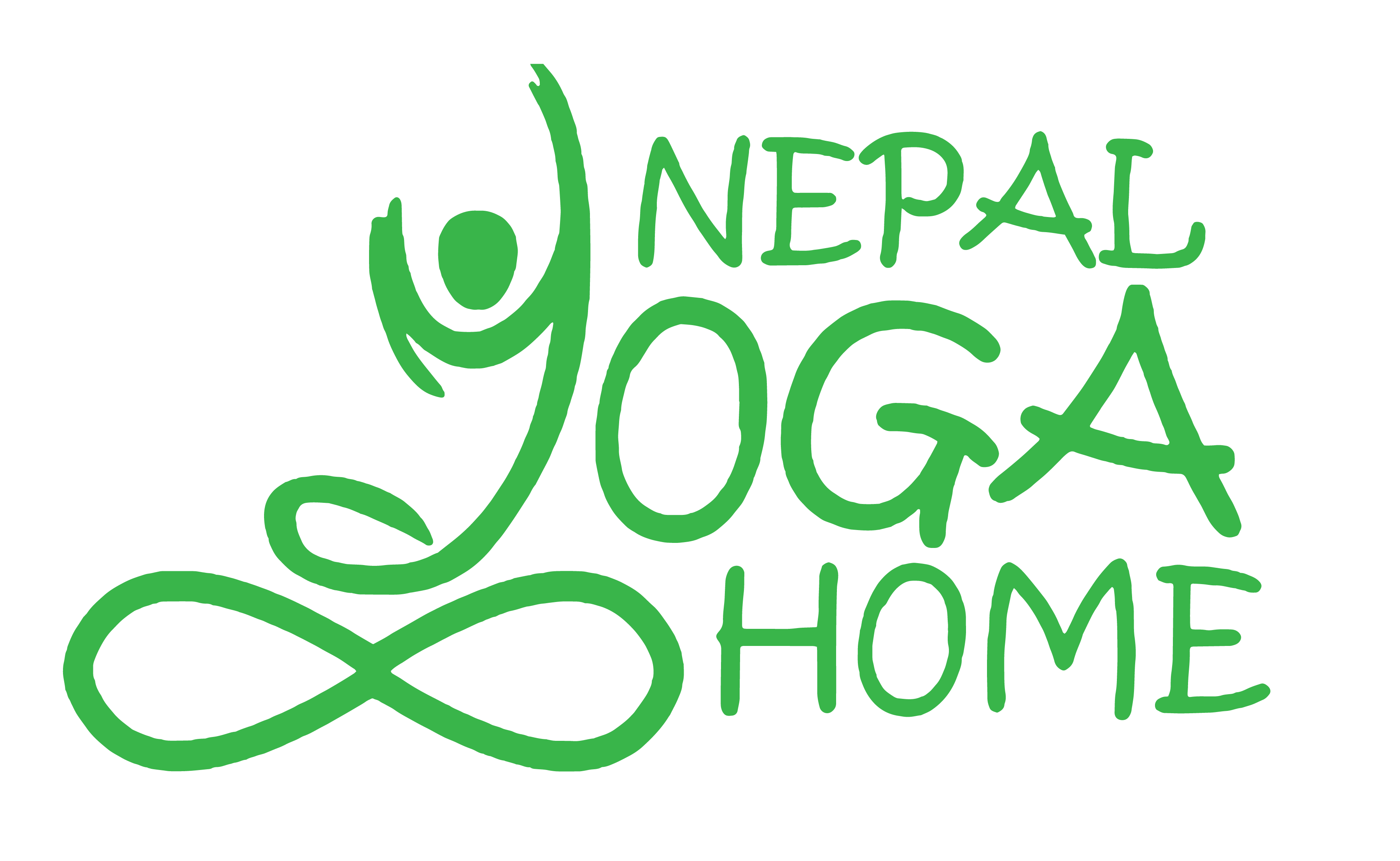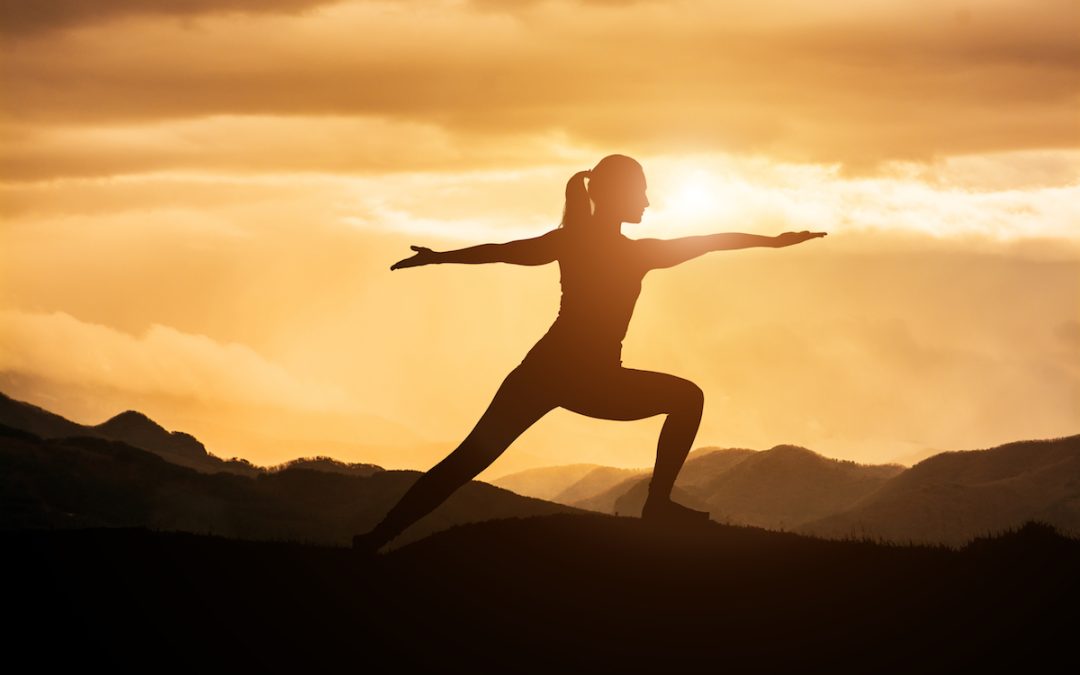
by Tirtha Acharya | May 19, 2024 | Yoga
In today’s modern world where everything is fast-paced, people often find themselves tired and stressed. They walk with the hope that everything will be all right but don’t take the necessary steps. Consequently, they end up tired, sad, and frustrated. They desperately search for an option to cure this madness but little do they know that the solution lies in their hands.
Welcome to the world of Grounding Yoga. It’s an ancient practice with a history that spans centuries. By performing this divine art, you’ll find yourself in a state of emotional and physical bliss. Join me as I take you on a journey that dives deep into the core of barefoot yoga and how it transforms your life.
The Importance of Grounding in Yoga:
Grounding yoga focuses on the idea of maintaining a special relationship with the ground that you walk on. It might sound a bit strange at first but once you feel the connection, there’s no going back. This practice anchors the practitioner to the present moment and helps to connect with earth’s energy.
The main difference between yoga that you do at home and grounding yoga is that grounding yoga focuses more on the connection with the earth. The poses practiced like the mountain pose and tree pose help to sustain stability, maintain balance, and emotional strength. By rooting yourself with the earth, you can gather the strength to tackle life’s challenges.
Understanding Barefoot Yoga:
Barefoot yoga, as the name suggests is a method of practicing yoga without shoes or socks. It emphasizes maintaining direct contact between the feet and the ground below. It may sound simple but it’s this simplicity that offers various benefits like improved strength, balance, and co-ordination. By not wearing shoes, you can fully harness the earth’s energy and experience a surreal feeling of belonging.
Grounding Yoga Poses for Barefoot Bliss:
Let’s explore some grounding yoga poses that you can do:
- Mountain Pose (Tadasana): Stand tall with your feet hip-width apart. Ground down through the soles of your feet and reach upward through the crown of your head.
- Tree Pose (Vrksasana): Balance on one foot and place the sole of the opposite foot against the inner thigh or calf. Root down through the standing foot while reaching skyward with the arms.
- Warrior Poses (Virabhadrasana I, II, III): These powerful poses strengthen the legs and core while fostering stability.
Balancing mindfulness and breathing
Mindfulness and breathing are essential components of any type of yoga. In the same way, it’s an integral component of grounded yoga too. It helps to deepen the connection with the present moment and promote inner peace. Before you begin, take a moment to be present in the current situation. Also, feel the sensations of your body and the rhythm of your breath. As you gracefully move through the yoga poses, let the breath guide you into every movement.
Creating a sacred space for practice:
Transform your yoga practice into a sacred ritual by creating an inviting space for practice. You can practice inside your home too but it’s recommended that you venture outdoors to practice grounded yoga. Build a mood with soft lighting, soothing music, and aromatherapy scents. Let go of distractions and immerse yourself fully in the present moment.
Connecting with Nature through Grounding Yoga:
There is no greater teacher than nature. Take your grounded yoga practice outdoors and understand the sights and sensations of the natural world. Feel the earth beneath your feet, the gentle breeze, and the warmth of the sun on your face. Let nature be your guide as you move through yoga poses.
As we conclude our exploration of barefoot yoga, I invite you to carry the essence of this practice with you wherever you go. Whether you’re on the mat, in nature, or amidst the hustle and bustle of daily life, remember to take moments to know where you stand and connect with the earth.
For more blogs visit on our Nepal Yoga Home blog section
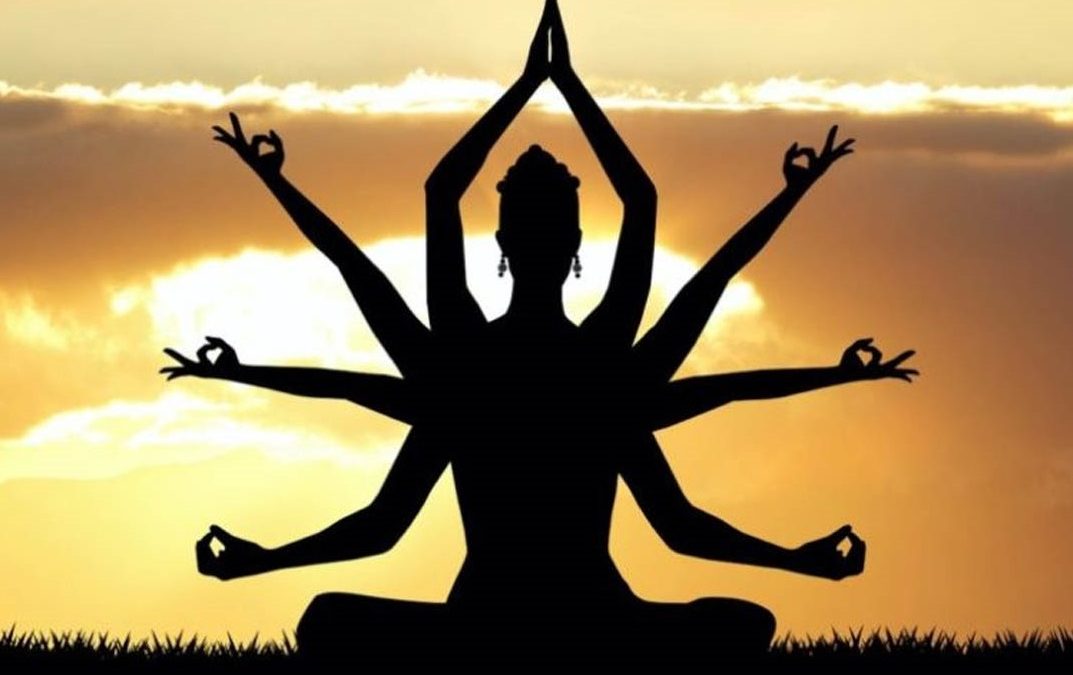
by Tirtha Acharya | May 6, 2024 | Yoga
Exploring the vast expanse of yoga’s history unveils a tapestry woven with threads of ancient wisdom, cultural exchange, and spiritual evolution. For those drawn to the practice of yoga, delving into its origins and evolutionary trajectory becomes an enriching journey of discovery and illumination. Elizabeth De Michelis’s groundbreaking work, “A History of Modern Yoga,” serves as a guiding beacon, illuminating the intricate pathways through which yoga has journeyed from its ancient roots in India to its global prominence today.
As we embark on this exploration, we delve deep into the annals of time, tracing the genesis of yoga from its sacred origins among the ancient Rishis of the Indus-Saraswati river valley civilization around 3000 BCE. From its nascent stages as an oral tradition passed down through generations of sages and seers to its codification in written scripture, such as Patanjali’s “Yoga Sutras,” yoga has undergone a profound metamorphosis, adapting to the changing tides of history while retaining its essence of spiritual inquiry and self-realization.
Yoga History: Tracing the Roots and Evolution of Yoga
If you’re deeply involved in yoga, chances are you’ve pondered its origins and evolution. For those of us delving into this ancient practice, understanding its historical journey becomes a compelling quest. Elizabeth De Michelis’s seminal work, “A History of Modern Yoga,” offers an illuminating exploration into the evolution of yoga, shedding light on its transformative journey from ancient India to the contemporary world.
De Michelis, esteemed director of the Dharam Hinduja Institute of Indic Research at Cambridge University, meticulously examines yoga’s genesis and metamorphosis within various religious and sociological contexts, both in its native India and its global dissemination. Through her exhaustive analysis, she unveils how influential figures, texts, and movements of the 19th and 20th centuries reshaped the millennia-old yoga tradition, particularly in the West.
Modern Yoga: A Fusion of Cultures and Philosophies
De Michelis defines Modern Yoga as the product of interaction between Western individuals captivated by Indian religions and a cohort of Westernized Indians over the past 150 years. Central to this evolution was Swami Vivekananda’s seminal work, “Raja Yoga,” published in 1896. Vivekananda’s reinterpretation of yoga, influenced by Western religious philosophy, introduced a reformed perspective vastly different from classical Hindu approaches.
Vivekananda’s narrative represented a departure from traditional teachings, reflecting a contemporary philosophical outlook emerging in India and the United States. This revisionist approach, while not a faithful reproduction of classical yoga, catalyzed yoga’s assimilation into Western culture, paving the way for its widespread adoption.
The Feminine Influence on Yoga: Unveiling Herstory
Despite the predominance of male figures in traditional yoga narratives, the rise of feminine energy has indelibly shaped the practice. As practitioners delve deeper into yoga’s history, the absence of women becomes striking, especially considering the substantial female presence among teachers and students. This glaring incongruity prompts a poignant inquiry into the impact of patriarchal culture on yoga’s historical portrayal.
Yet, amidst this patriarchal backdrop, glimpses of the divine feminine emerge, hinting at a forgotten legacy of female scholars, priestesses, and philosophers who ardently practiced yoga. Their contributions, though often overshadowed, underscore the intrinsic role of women in shaping yoga’s spiritual fabric.
From Ancient Wisdom to Modern Practice: Yoga’s Ever-Evolving Journey
The roots of yoga trace back to the ancient Rishis of the Indus-Saraswati river valley civilization, circa 3000 BCE, who transmitted spiritual wisdom through deep meditation. Over millennia, yoga evolved from oral tradition to written scripture, culminating in the sage Patanjali’s seminal text, the “Yoga Sutras,” around the 4th to 2nd century BCE. Patanjali’s elucidation of the Ashtanga or eight-fold path provided a foundational framework for yogic practice, emphasizing meditation and spiritual ascension.
In the 20th century, yoga experienced a renaissance, propelled by pioneering masters like Swami Vivekananda, Paramahansa Yogananda, Sivananda, and Krishnamacharya. Their efforts heralded the global dissemination of yoga, transcending cultural boundaries and inspiring millions worldwide to embrace its transformative power.
Krishnamacharya, revered as the father of modern postural yoga, revolutionized the physical practice, laying the groundwork for diverse yoga styles such as Iyengar and Ashtanga. Through his disciples, including BKS Iyengar and Sri Pattabhi Jois, Krishnamacharya’s legacy continues to influence contemporary yoga practices, bridging ancient wisdom with modern sensibilities.
As yoga continues to evolve in response to changing cultural dynamics, its essence remains rooted in the timeless pursuit of self-realization and spiritual awakening. In unraveling yoga’s rich tapestry of history and history, we embark on a profound journey of self-discovery, honoring the sacred union of body, mind, and spirit that defines the essence of yoga.
Conclusion
In the timeless saga of yoga’s history, we find ourselves woven into the fabric of a story that spans millennia, bridging the realms of the ancient and the modern, the East and the West. As we unravel the layers of its rich tapestry, we discover a path illuminated by the wisdom of sages, the courage of pioneers, and the grace of countless souls who have walked this sacred journey before us. Let us honor this legacy by embracing the transformative power of yoga in our lives, cultivating a deeper connection with ourselves, each other, and the boundless universe that surrounds us. As we continue to write the next chapters of yoga’s unfolding story, may we do so with reverence, humility, and a steadfast commitment to the pursuit of truth, love, and spiritual awakening.
For more blogs visit on our Nepal Yoga Home blog section.
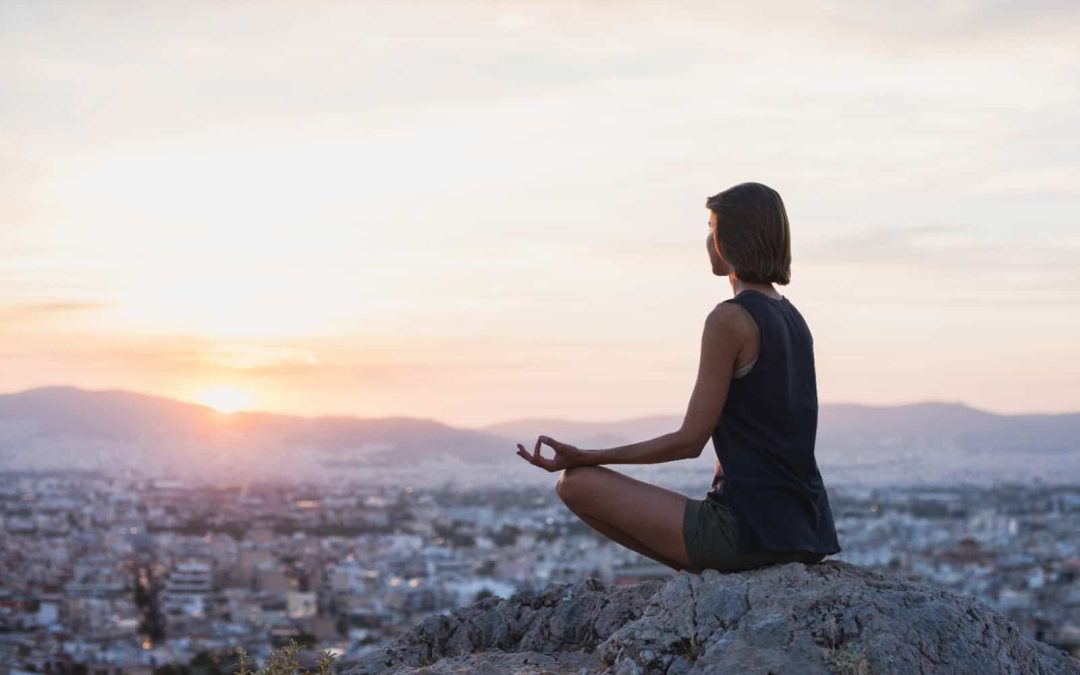
by Tirtha Acharya | May 3, 2024 | Yoga
Exploring Hatha Yoga Techniques
In today’s fast-paced world, stress has become an inevitable part of our daily lives. Whether it’s due to work pressures, personal relationships, or financial worries, stress can take a toll on our mental and physical well-being. However, there are various stress relief techniques that can help us find a calm and peaceful state of mind. One such technique that has gained significant popularity is mindful breathing through Hatha Yoga techniques. By harnessing the power of our breath, we can unlock a world of tranquility and rejuvenation.
The Essence of Mindful Breathing in Hatha Yoga
In the practice of Hatha Yoga, mindful breathing holds a central place. It involves bringing awareness to the breath as it moves in and out of the body, focusing on the present moment without judgment. This technique is often accompanied by specific breathing exercises, known as pranayama, which aim to regulate the breath and enhance mindfulness. Through regular practice, individuals can cultivate a deeper connection with their breath and experience profound relaxation and inner peace.
Exploring the Benefits of Mindful Breathing
- Stress Reduction: Mindful breathing has been shown to be highly effective in reducing stress levels. By focusing on the breath, individuals can calm the nervous system, lower cortisol levels, and promote feelings of relaxation and well-being.
- Anxiety Management: Anxiety is a common mental health issue that can significantly impact daily functioning. Mindful breathing techniques can help individuals manage anxiety by promoting a sense of calm and reducing the intensity of anxious thoughts and feelings.
- Enhanced Mindfulness: Mindful breathing is a cornerstone of mindfulness practice. By bringing attention to the present moment through the breath, individuals can cultivate greater awareness, clarity, and presence in their lives.
- Improved Emotional Regulation: Mindful breathing can also help individuals regulate their emotions more effectively. By developing a greater capacity to observe and accept their emotions without judgment, individuals can respond to challenging situations with greater ease and resilience.
The Role of Mindful Breathing in Smoking Cessation
Smoking cessation remains a significant public health challenge, with many smokers struggling to quit despite their desire to do so. Mindful breathing techniques, rooted in Hatha Yoga, have shown promise as adjunctive interventions for smoking cessation. By helping individuals cope with cravings, withdrawal symptoms, and negative affect, mindful breathing can support their efforts to quit smoking and lead healthier lives.
Research Insights into Mindful Breathing and Smoking Cessation
- Reduction in Cravings: Studies have demonstrated that mindful breathing techniques can significantly reduce smoking cravings. By redirecting attention away from the urge to smoke and towards the breath, individuals can diminish the intensity of their cravings and resist the temptation to smoke.
- Management of Withdrawal Symptoms: Nicotine withdrawal symptoms, such as irritability, anxiety, and difficulty concentrating, can pose significant challenges for individuals attempting to quit smoking. Mindful breathing techniques have been shown to alleviate these symptoms, providing smokers with effective coping strategies during the cessation process.
- Enhanced Self-Regulation: Mindful breathing fosters self-regulation, a critical skill for successful smoking cessation. By cultivating greater awareness of their thoughts, emotions, and bodily sensations, individuals can better understand their smoking triggers and develop healthier coping mechanisms.
Practical Tips for Incorporating Mindful Breathing into Smoking Cessation
- Daily Practice: Encourage individuals to incorporate mindful breathing into their daily routine. Setting aside a few minutes each day to engage in mindful breathing exercises can help strengthen their capacity to cope with cravings and stress.
- Mindful Smoking: Encourage individuals to practice mindfulness while smoking. Instead of smoking automatically, encourage them to pause and bring awareness to the sensations of smoking, including the taste, smell, and physical sensations associated with it.
- Mindful Coping: Teach individuals to use mindful breathing as a coping strategy when faced with smoking triggers or challenging situations. By bringing attention to the breath, they can create space between the trigger and their response, allowing them to make more conscious choices.
Conclusion
In conclusion, the practice of mindful breathing, deeply rooted in Hatha Yoga techniques, serves as a potent catalyst for promoting mental and physical well-being. By fostering a deeper connection with the breath and anchoring ourselves in the present moment, we unlock a wealth of benefits that extend far beyond the confines of the yoga mat. From stress reduction and anxiety management to enhanced mindfulness and emotional regulation, mindful breathing offers a pathway to inner peace and resilience in the face of life’s challenges.
Moreover, when applied as an adjunctive intervention for smoking cessation, mindful breathing techniques provide invaluable support for individuals striving to break free from the grips of addiction. By helping manage cravings, withdrawal symptoms, and smoking triggers, mindful breathing empowers individuals on their journey towards a smoke-free life.
As we embrace the transformative power of mindful breathing, let us remember that the key lies in consistent practice and gentle persistence. Through daily engagement with mindful breathing exercises, coupled with compassionate self-awareness, we cultivate a profound sense of well-being and vitality in our lives. Let us breathe mindfully, live fully, and journey towards a brighter, healthier future.
For more blogs visit on our Nepal Yoga Home blog section.
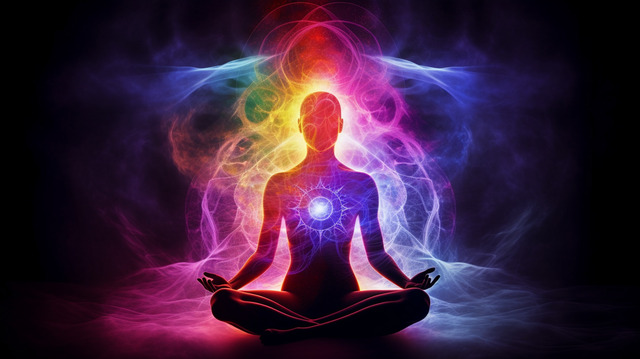
by Tirtha Acharya | May 1, 2024 | Yoga
Understanding MSRT Meditation:
In today’s busy lifestyle, finding moments of inner peace and emotional balance can feel like an uphill battle. That combined with the ever-present struggle of modern life further increases stress levels. People search for different techniques to mitigate stress but only a few can find effective ones. Well, look no further, as in this blog, we shall discuss a technique that will help you manage stress easily.
Mind Sound Resonance Technique (MSRT) is a specific yoga practice that focuses on calming the mind and body. It’s also designed to build emotional strength and self-regulation. The major difference that this form of meditation has with other forms is that it emphasizes on mindful awareness and self-regulation strategies. This meditation is developed through decades of research and clinical experience.
In addition, MSRT meditation draws influence from the principles of cognitive-behavioral therapy, neuroscience, and mindfulness. It’s a comprehensive and evidence-based approach to managing stress and building emotional strength.
Major aspects of MSRT involve:
• Loud and silent chanting of AUM (Aa, Uu, Mm)
• Chanting the maha mrityunjaya mantra
• Mental chanting of AUM of OM 9 times
• Establishing a strong mental resolve and repeating it 9 times
Steps to practice MSRT
1. Start MSRT meditation by opening with a prayer called ‘om tryambakaa’.
2. Begin chanting A, U, M and AUM loudly for 3/5 rounds. This loud chanting is called ahata.
3. Then chant A, U, M silently for 3/5 rounds. This silent chanting is called anahata.
4. Begin the Ahata chanting of Mahamurutyunjaya mantra for 3/5 rounds
5. Then, begin the anahata chanting of Mahamurutyunjaya mantra for 3/5 rounds.
6. Start the Anahata AUM (Mental repetition of AUM) for 9 rounds.
7. Commence the Ajapajapa OM. Repeat this process for 9 rounds.
8. After completing the above steps, stay in silence.
9. Resolve is a sankalpa and it’s a positive statement. You should repeat it for 9 rounds in mind.
10. End the practice with a closing prayer called ‘sarve bhavantu’.
General guidelines for practicing MSRT Meditation:
To maximize the benefits of MSRT Meditation, consider the following tips
• Establish a regular meditation routine that starts with short sessions.
• Once you’re comfortable, gradually increase the duration of each session.
• Find a quiet and comfortable space for meditation that’s free from distractions.
• Approach meditation with an open mind.
• Allow yourself to explore different techniques and practices.
• Be patient and compassionate with yourself as it’s a skill and takes time
Benefits of MSRT Meditation:
Research has shown different benefits associated with MSRT Meditation. Here are some benefits associated with it:
• Promotes emotional regulation and resilience.
• Decreases anxiety levels.
• Improves mood and overall well-being.
• Builds greater self-awareness and mindfulness.
• Builds healthy relationships and communication.
• Helps to cope with difficult emotions.
• Increases focus, concentration, and cognitive clarity.
• Helps in personal growth and self-discovery.
• Promotes coping skills and adaptive responses to challenges.
• Builds a sense of inner peace, balance, and equanimity.
Techniques and Practices:
MSRT Meditation used a variety of techniques and practices that aim to promote self-awareness. These may include:
• Mindful Breathing: Focus on the sensations of your breath to anchor yourself in the present moment and build inner peace
• Body Scan: Bringing awareness to different body parts and releasing stress and tension.
• Cognitive Reframing: Transforming negative thoughts into a more positive and balanced one.
• Emotional Regulation Strategies: Learn to recognize and respond to emotions in a healthy way instead of acting impulsively.
As we reach the end of our MSRT meditation exploration, we encourage you to practice it. It’s a powerful tool for maintaining inner harmony and well-being. By cultivating mindful awareness, you can walk through life’s challenges with greater clarity and compassion. Whether you’re seeking relief from stress or simply striving to be a better person, msrt meditation is for you.
For more blogs visit on our Nepal Yoga Home blog section.

by Tirtha Acharya | Apr 27, 2024 | Yoga
Introduction to Body Detox
In today’s fast-paced world, maintaining optimal health and well-being is more crucial than ever. Amidst the hustle and bustle of daily life, our bodies are constantly bombarded with toxins from various sources, ranging from environmental pollutants to unhealthy dietary choices. The accumulation of these toxins can lead to a host of health issues, ranging from digestive problems to chronic fatigue. However, amidst the chaos, there exists a time-honored practice that offers a holistic approach to detoxifying the body and revitalizing the spirit: Hatha Yoga. Originating in ancient India, Hatha Yoga is much more than a series of physical postures; it is a profound system of self-care that encompasses physical, mental, and spiritual well-being. In this comprehensive guide, we will explore the transformative power of Hatha Yoga in detoxifying the body, promoting vitality, and achieving optimal well-being. Let us embark on a journey to cleanse your body from within, using time-honored practices rooted in ancient wisdom.
Shatkarma: Purifying the Body from Within
Shatkarma, meaning “six actions,” is a foundational aspect of Hatha Yoga practice dedicated to cleansing the body from within. These ancient techniques target different systems of the body, promoting detoxification and rejuvenation. Through practices like Dhauti, Basti, and Neti, practitioners cleanse the digestive tract, eliminate toxins, and restore balance to the body’s internal functions.
Dhauti: Internal Cleansing for Digestive Health:
Dhauti focuses on purifying the digestive tract, promoting optimal digestion, and eliminating toxins. By engaging in practices like abdominal flapping and vastra dhauti, practitioners stimulate the digestive organs and enhance detoxification. This ancient practice offers profound benefits for digestive health and overall well-being.
Basti: The Yogic Enema for Holistic Detoxification:
Basti, commonly known as the yogic enema, targets the lower abdomen and elimination tract, facilitating thorough detoxification. Utilizing techniques like mula bandha and modern variations such as coffee enemas, practitioners rid the body of toxins and bolster immunity. Basti aids in boosting energy levels and restoring vitality to the body.
Neti: Nasal Cleansing for Respiratory Health:
Neti, the practice of nasal cleansing, clears the nasal passages and sinuses, providing relief from allergies and congestion. Whether employing a Neti Pot or sutra neti, practitioners experience improved respiratory health and enhanced detoxification. This ancient practice offers respite from respiratory ailments and promotes overall well-being.
Pranayama: Harnessing the Power of Breath for Detoxification:
Pranayama, or breathwork, serves as a potent tool for detoxifying the body and calming the mind. Techniques like Kapalabhati and Nadi Shodhana purify the respiratory system, increase oxygenation, and release stored tension and toxins. By harnessing the power of the breath, practitioners cleanse the body from the inside out, promoting overall well-being and vitality.
Incorporating meditation into a detox regimen enhances the cleansing process, enabling the release of mental and emotional toxins stored in the mind. Practices like mindfulness meditation foster inner peace and clarity, reducing stress and promoting balance and equanimity. As the mind detoxifies, practitioners experience greater mental clarity, focus, and resilience.
Lifestyle and Diet: Nourishing the Body for Optimal Detoxification:
Embracing a healthier lifestyle and diet is essential for supporting the body’s natural detoxification processes and promoting long-term vitality. Nourishing oneself with whole, nutrient-dense foods and staying hydrated provides the body with essential building blocks for optimal detoxification. Incorporating regular exercise, stress management techniques, and supportive relationships further enhances the detoxification process, promoting holistic well-being.
Conclusion:
In conclusion, Hatha Yoga offers a comprehensive approach to detoxifying the body, promoting vitality, and restoring balance to the mind and spirit. Through practices like Shatkarma, Pranayama, and Meditation, practitioners can cleanse the body from within, achieving optimal well-being and radiance. Embrace the transformative power of Hatha Yoga and embark on a journey to rejuvenate your body, mind, and spirit today. As you delve deeper into the ancient wisdom of Hatha Yoga, may you unlock the boundless potential within and experience the profound benefits of inner cleansing and renewal. With dedication and practice, may you find harmony and vitality in every aspect of your being, embracing a life of radiant health and holistic well-being.
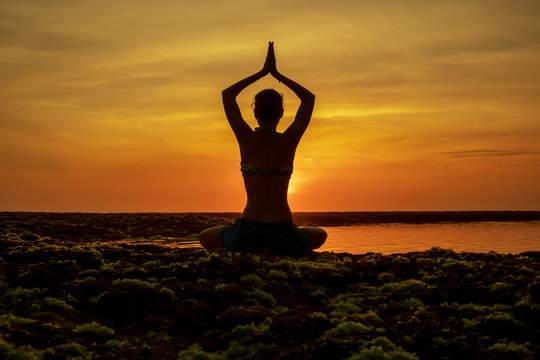
by Tirtha Acharya | Apr 23, 2024 | Yoga
Introduction to Awakening Asana Hatha Yoga
Hatha Yoga, deeply rooted in ancient traditions and wisdom, offers seekers a profound journey toward spiritual growth and self-realization. Within its expansive realm, specific postures known as “asanas” serve as potent tools for awakening and expanding consciousness. As we delve into the exploration of 10 Awakening Asanas, we embark on a transformative odyssey guided by the essence of Hatha Yoga. Through deliberate movements and mindful breath, practitioners are invited to traverse the inner landscapes of their being, unveiling layers of awareness and embracing the radiant light of spiritual illumination.
- Mountain Pose (Tadasana):
The Mountain Pose, or Tadasana, serves as the foundational posture for many Hatha Yoga sequences. In this pose, practitioners stand tall and rooted like a mountain, connecting deeply with the earth beneath them. Through conscious alignment and steady breath, Tadasana awakens a sense of grounding and presence, laying the groundwork for spiritual growth and inner stability.
- Tree Pose (Vrksasana):
Vrksasana, or Tree Pose, invites practitioners to cultivate balance and poise while rooting down into the earth and reaching towards the sky. As individuals find stability in this posture, they awaken a sense of interconnectedness with all living beings, embodying the wisdom of the ancient trees. Through Vrksasana, practitioners nurture a deeper connection to nature and the divine, fostering spiritual growth and inner harmony.
- Warrior Pose (Virabhadrasana):
Virabhadrasana, or Warrior Pose, embodies strength, courage, and determination on the yogic path. As practitioners sink into the warrior stance, they ignite the fire within, awakening a sense of inner power and resilience. Through the practice of Virabhadrasana, individuals confront obstacles with grace and fortitude, emerging stronger and more aligned on their journey towards spiritual awakening.
- Downward-Facing Dog (Adho Mukha Svanasana):
Adho Mukha Svanasana, or Downward-Facing Dog, offers a rejuvenating stretch for the entire body while calming the mind and invigorating the spirit. As practitioners surrender into the pose, they release tension and resistance, opening themselves to the flow of prana, or life force energy. Through the practice of Downward-Facing Dog, individuals experience a profound sense of release and surrender, paving the way for spiritual growth and inner freedom.
- Child’s Pose (Balasana):
Balasana, or Child’s Pose, serves as a resting posture that invites practitioners to surrender and find refuge within themselves. In this gentle pose, individuals bow down to the earth, symbolizing humility and surrender on the spiritual path. Through the practice of Balasana, practitioners cultivate a sense of inner peace and surrender, allowing them to let go of egoic attachments and connect with their true essence.
- Seated Forward Bend (Paschimottanasana):
Paschimottanasana, or Seated Forward Bend, offers a deep stretch for the spine and hamstrings while calming the mind and soothing the nervous system. As practitioners fold forward into the pose, they release tension and resistance, surrendering to the present moment with acceptance and grace. Through the practice of Paschimottanasana, individuals cultivate a sense of introspection and surrender, paving the way for spiritual growth and inner clarity.
- Cobra Pose (Bhujangasana):
Bhujangasana, or Cobra Pose, awakens the heart center and expands the chest, inviting practitioners to open themselves to love and compassion. As individuals rise into the cobra stance, they embody the serpentine energy of transformation and renewal. Through the practice of Bhujangasana, practitioners awaken the divine flame within, igniting a sense of passion and purpose on the spiritual path.
- Lotus Pose (Padmasana):
Padmasana, or Lotus Pose, is a classic seated posture that symbolizes purity, enlightenment, and spiritual growth. As practitioners settle into the lotus position, they cultivate inner stillness and tranquility, transcending the fluctuations of the mind. Through the practice of Padmasana, individuals awaken to the inherent beauty and perfection of their true nature, experiencing a profound sense of oneness with all of creation.
- Corpse Pose (Savasana):
Savasana, or Corpse Pose, is a final relaxation posture that allows practitioners to integrate the benefits of their practice on a deep level. As individuals surrender into the pose, they release all effort and tension, entering a state of profound relaxation and surrender. Through the practice of Savasana, practitioners experience a taste of inner peace and transcendence, paving the way for spiritual growth and awakening.
- Meditation (Dhyana):
Dhyana, or Meditation, is the culmination of the Hatha Yoga practice, offering practitioners a direct experience of their true nature beyond the fluctuations of the mind. As individuals enter into meditation, they dive deep into the inner realms of consciousness, awakening to the boundless peace and bliss that lie within. Through the practice of Dhyana, individuals awaken to the eternal presence of their true self, experiencing a profound sense of unity and interconnectedness with all of existence.
Conclusion:
In the sacred voyage of spiritual growth and awakening, Hatha Yoga emerges as an invaluable companion and guide. Through the dedicated practice of these 10 Awakening Asanas, practitioners embark on a transformative journey of self-discovery, inner exploration, and spiritual illumination. Let the timeless wisdom of Hatha Yoga continue to shine brightly on our path, leading us toward greater awareness, profound presence, and divine union with the essence of existence itself.

